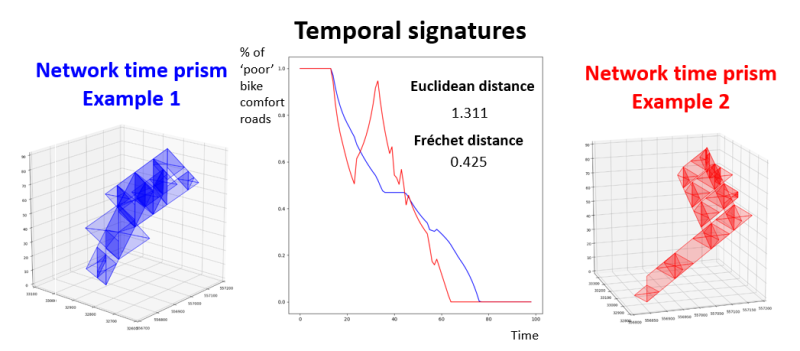Researchers Represent CURA at the 2019 AAG Conference
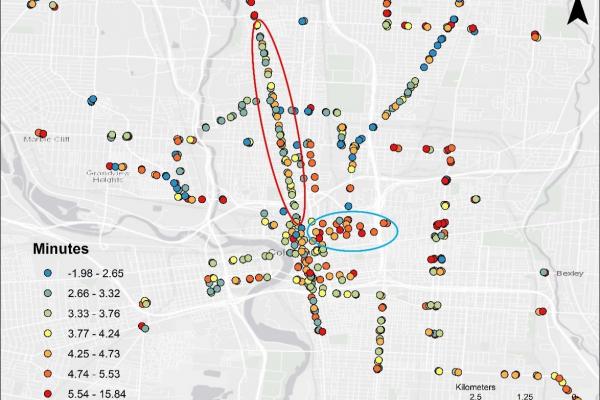
CURA was well-represented at the 2019 American Association of Geographers annual meeting, which took place in Washington DC in early April.
Transfer Risk
Graduate research associate Luyu Liu presented his work modeling transfer risk in the Central Ohio transit network. The paper, titled Measuring public transit transfer risk using high-resolution schedule and real-time bus location data is an in depth analysis looking at the transfer between routs in a public transit system. Luyu looked at high-resolution schedule and real-time vehicle location data to develop two measures to assess transfer risk and time penalties in a public transit system. Transfer Risk (TR) measures the proportion of missed transfers and Average Total Time Penalty (ATTP) shows overall time loss compared to the schedule. Luyu illustrated these measures using schedule and real-time vehicle data published via the General Transit Feed Specification (GTFS) for the transit authority in Columbus, Ohio. He aggregated, visualized and analyzed each index under different spatial and temporal resolutions. He also simulated the impacts of dedicated bus lanes (DBLs) on the overall transfer performance and different types of transfers. The results demonstrate the potential to apply the TR and ATTP indexes to assess the impacts of delays on transfers and guide planning and decision making to improve on-time performance.
Co-author: Harvey Miller
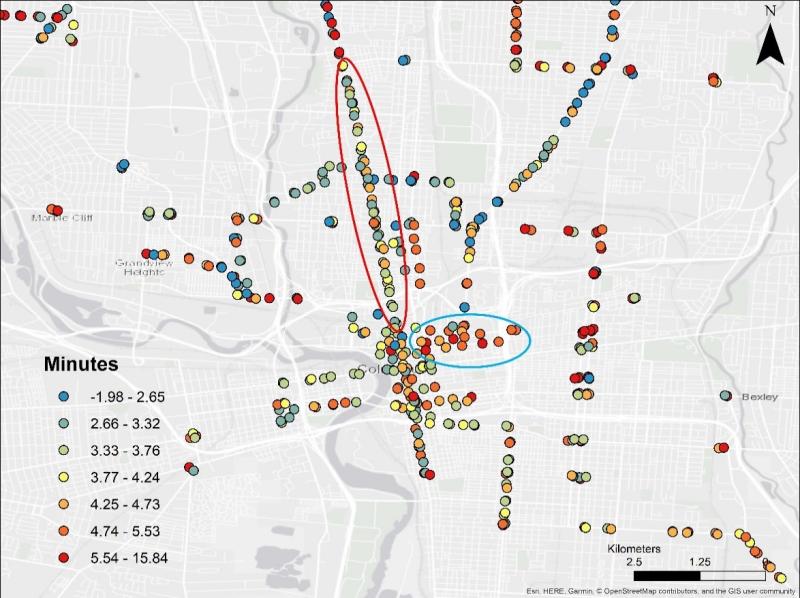
Measuring Accessibility
PhD researcher associate Jinhyung Lee presented a paper titled Measuring accessibility spatial equity using average space-time prisms. In his research he was looking at the space-time prism (STP) as the envelope of all possible travel paths in space and time between two anchor locations and times, measuring accessibility for an individual given a designated travel and activity episode. He found that there is no analytical time geographic method to calculate a collective-level representative STP that is consistent with individual STPs. To fill this gap, this research develops the concept of average space-time prism (ASTP). Jinhyung and his research team developed methods for calculating an ASTP using analytical time geography and elliptic Fourier shape analysis techniques. The ASTP provides a geometric and visual summary of collective accessibility: it can be used to generate representative STPs for aggregate geographic units such as neighborhoods and cities based on individual-level data. A possible application of the ASTP is the spatial equity analysis of accessibility. The ASTP can be located at individuals’ anchor locations and overlaid with opportunities, enabling in-situ comparisons between individual versus collective accessibility and accessibility equity analysis considering geographic contexts. Jinhyung and his team illustrated this ASTP’s capability when measuring the impacts of new transit service on healthcare access equity in a neighborhood in Columbus, Ohio, USA.
Co-author: Harvey Miller
Recent Publication: Lee, J. and Miller, H.J., 2019. Analyzing collective accessibility using average space-time prisms. Transportation Research Part D: Transport and Environment, 69, pp.250-264.
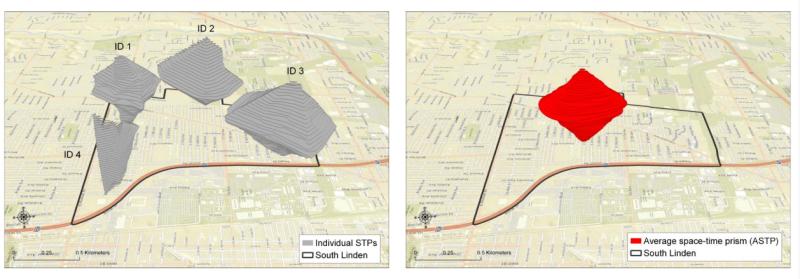
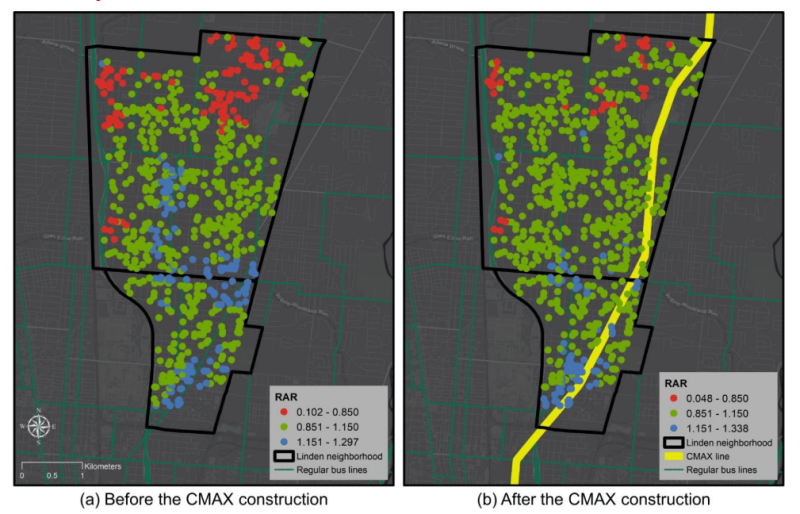
Measuring Network-time Prisms
PhD researcher associate Young Jaegal presented a paper titled Measuring the semantic similarity of network-time prisms using temporal signatures. In his research he was looking at network time prism (NTP) and to propose a new semantic similarity measure of them. The strategy is the temporal signature approach that has proven to be effective in measuring similarity of planar STPs: convert a 3D NTP to a time series based on a selected property of the NTP subnetwork at moments in time. Spatial analysis methods developed for network events, such as network autocorrelation, can be used in this approach to measure the semantic properties of NTPs. To demonstrate the proposed method, Young and his research team performed a case study using a bike-share trip dataset in Columbus, Ohio. The case study constructs NTPs of bike trips taken between bike-share stations and compares NTPs based on the level of bikeability.
Co-author: Harvey Miller
